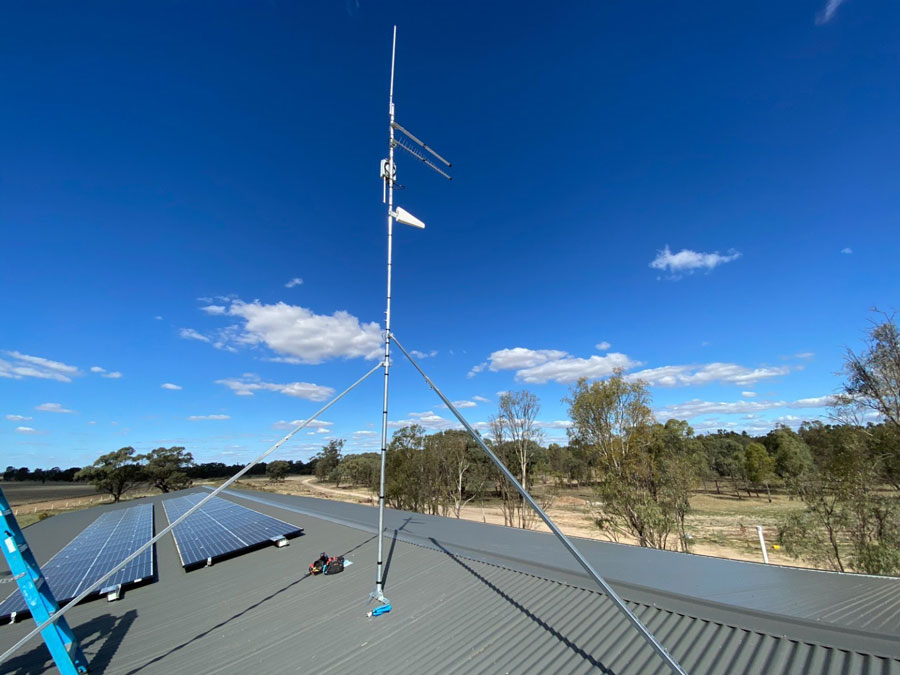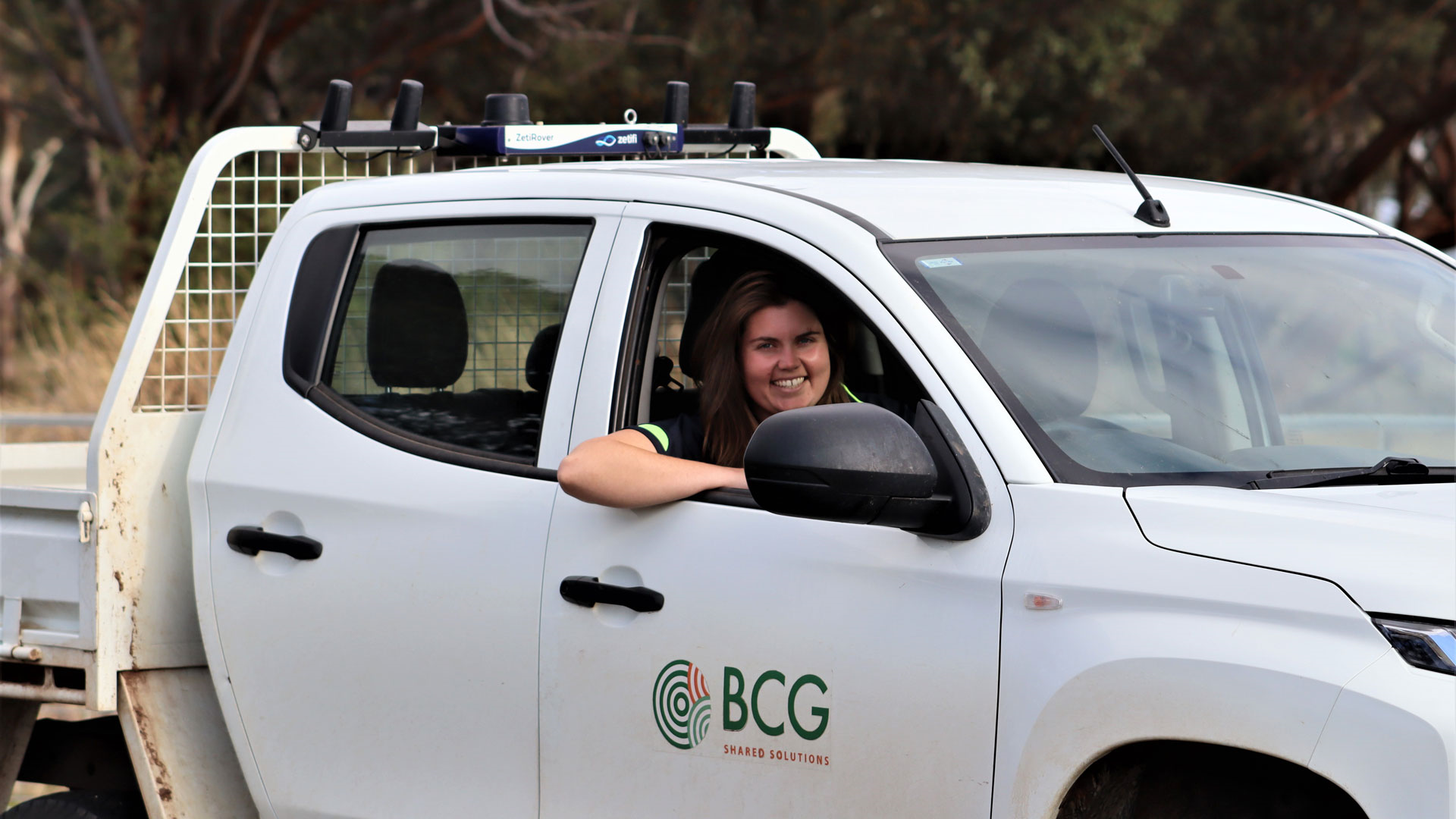Growers are keen to embrace digital technology but, for many, a lack of reliable in-field connectivity is standing in the way.
For entrepreneurial network engineer Dan Winson, understanding the scale of this problem set him on a path of discovery and invention that has led to new connectivity options for farmers.
Mr Winson grew up in Wagga Wagga and is a wireless network engineer by training. He completed a double degree in Business and Information Technology and a master’s degree in wireless networking at Charles Sturt University.
“I’m not a farmer but growing up in Wagga and with family connections to the land, I’ve had more exposure than most network engineers to the problems farmers face as our lives become more reliant on connectivity,” he says.
“However, it wasn’t until I started researching the issue that I realised traditional telcos aren’t well positioned to service remote areas. The cost for the infrastructure investment just doesn’t stack up in many low population density areas.”
Mr Winson was teaching at TAFE in 2016 when he started focusing more intently on whether an alternative approach could fill the gaps left by traditional operators. In 2018 he took long service leave to work full-time on the project. Since then, the project has blossomed into technology company Zetifi, with a team of 25 technicians developing and building new connectivity solutions.
One key thing that spurs the interest of startup founders is seeing innovators out there having to solve the problem for themselves.
“In my case, I heard about a grower who had built his own 53 metre telecommunication tower on his property to create long-range wi-fi. That sort of action stands out and validates the need for better solutions that can be applied more broadly.
“You think, hang on, if someone is willing to do that then there must be a large opportunity to solve this problem for the others who are not in a position to actually solve it themselves.”
Zetifi tools
A problem can be solved in multiple ways and in the years since the company began, Zetifi has narrowed its solution to two main products: the ZetiRover and ZetiCell.
“In some cases, the best solution is to build a private network,” Mr Winson says.
“Other times we find you can provide a more flexible solution and better connectivity for in-field operations by just using a vehicle-based hotspot or repeater; we call this the ZetiRover.”
The ZetiRover is a box mounted on top of a tractor, sprayer or harvester. It combines the coverage from Telstra, Optus or satellite networks to convert patchy coverage to fast, long-range wi-fi connectivity for hundreds of metres.
“A grower then has a ‘bubble of wi-fi’ around their vehicle which allows them to make phone calls, monitor farm access, or just access the internet for anything they may need in the field,” Mr Winson says.
The ZetiCell works on a similar principle but is mounted in a fixed location using mains power or solar panels, providing a permanent bubble of wi-fi in high-use areas such as around sheds or yards.

ZetiCell installation on a farmhouse roof provides outdoor wi-fi as an alternative to mobile coverage in an area that would otherwise be a connectivity blackspot. Photo: Zetifi
Simplicity is key to Zetifi’s approach and Mr Winson says hiding from users the networking complexity involved in their products is one of their key design principles.
Ease-of-use drives adoption and our devices can simply be plugged into the cigarette lighter power socket and you get a bubble of wi-fi around your tractor.
Making the devices suitably rugged for on-farm use has also been a challenge, says Mr Winson.
“Through trial, error and testing, including cooking products in a pie warmer to simulate the Australian summer, we’ve ended up with products that are now proving themselves robust in a wide range of temperature extremes, rain, dust and vibration,” he says.
Zetifi’s improved connectivity not only enhances general communication but also potentially boosts farm productivity by enabling the use of sensors, wireless cameras for farm security, autonomous tractors and other tools.
Collaboration
Initially, Zetifi completed two startup accelerator programs run by Telstra and the SparkLabs program Cultiv8.
“From there we raised around a million dollars with support from GRDC’s GrainInnovate Venture Capital fund as well as a range of angel investors,” Mr Winson says.
“Gaining momentum, we were then able to access a range of state and Commonwealth-level grants totalling more than $5 million. This enabled us to thoroughly test our products, show what we can do, and commercialise our technology.
“With all that behind us, last year we had the runs on the board to raise $12 million through a Series A funding round that was led by GrainCorp Ventures and Telstra, and again, with participation from GrainInnovate.”
With traction in Australia and preparation underway for sales in Canada and the US in the near future, we’re ready to transition to mass production and make our products available to more people.
Zetifi plans to continue most of its manufacturing, prototyping and tooling at its Wagga Wagga head office.
CASE STUDY: Paddock to cloud: a new era
Since it was founded more than 31 years ago, Birchip Cropping Group (BCG) has often led the charge when it comes to innovation.
Kate Finger is a project manager within the BCG research team and says that knowing the “pain points” for growers drives the hunt for solutions.

ZetiRover unit installed on one of Birchip Cropping Group’s utes with Kate Finger on the controls. Photo: Demi Taylor, BCG
BCG services about 500 grower members covering the Southern Mallee, Wimmera and North Central areas of southern Victoria. It is an area with many wireless blackspots.
“We are constantly hearing from growers about issues with connecting agtech devices or just simply being able to make reliable phone calls out in the paddock. Whether it be to talk to their agronomist or other service providers, inconsistent connectivity has a large impact on productivity, as growers often have to return to the office to do this rather than in real-time in the paddock,” Ms Finger says.
“We started trialling Zetifi tools three years ago, installing ZetiCells on three properties and using the ZetiRovers on BCG’s fleet vehicles.
“We saw immediate productivity gains; phone calls and even videoconferences could be taken by staff in the field and we reduced the double handling of data entry as we could upload data straight from the paddock to the cloud.
It also improved our work safety practices due to vastly improved communication.
“Additionally, it meant we could attract high quality research and management staff together with their families to our regional location as we could offer improved connectivity, an important drawcard during COVID-19 lockdowns and thereafter.”
The three growers involved in the pilot study saw such benefits with the improved connectivity that they have retained the tools. They experienced improvements not only in communication but also in connectivity of sensors. As a result, they were able to monitor water levels in troughs and increase farm security by keeping track of people accessing their properties.
Lack of connectivity is regularly cited as the main barrier to adopting new technology and improving productivity.
Ms Finger says that new connectivity options from companies like Zetifi means waiting for a new phone tower in a district is no longer the only solution.
More information: zetifi.com; Kate Finger, kate.finger@bcg.com.au

























































